Table of Contents
Are you looking for a way to break your training routine and effectively work out your whole body with minimal equipment? If so, you’re in the right place. In today’s article, we’ll discuss how to exercise effectively with a power bag. You may have walked past this fitness tool in the gym several times, unsure how to use it. Therefore, you might be surprised to learn that the weighted bag can easily replace traditional equipment like a barbell or dumbbells. You can manage a full-body workout with it, and it’s even suitable for HIIT. In today’s article, we’ll introduce you to the best exercises with a power bag that you can easily incorporate into your training routine.
What Is a Power Bag?
You may know this fitness tool under several names, such as a power bag, sandbag, strength bag, or weighted bag. It typically consists of a cylinder with handles made of durable material filled with sand. You can usually find them in weight ranges from 5 to 30 kg. However, there are also power bags with adjustable weight that you can fill with water as needed. You may also come across single-handed or other specialized sandbags used by CrossFit athletes or strongmen during a workout. These come in various shapes, such as balls or cones, and can weigh over 100 kg.
The power bag isn’t just an ordinary alternative to dumbbells or a barbell. Thanks to its unstable fill in the form of sand or water, it also challenges your balance and core stability. The water or sand filling moves around in the power bag during exercise, resulting in uneven weight distribution. To maintain balance, you have to engage deep stabilizing muscles (CORE), making it ideal for functional training.[1–2]
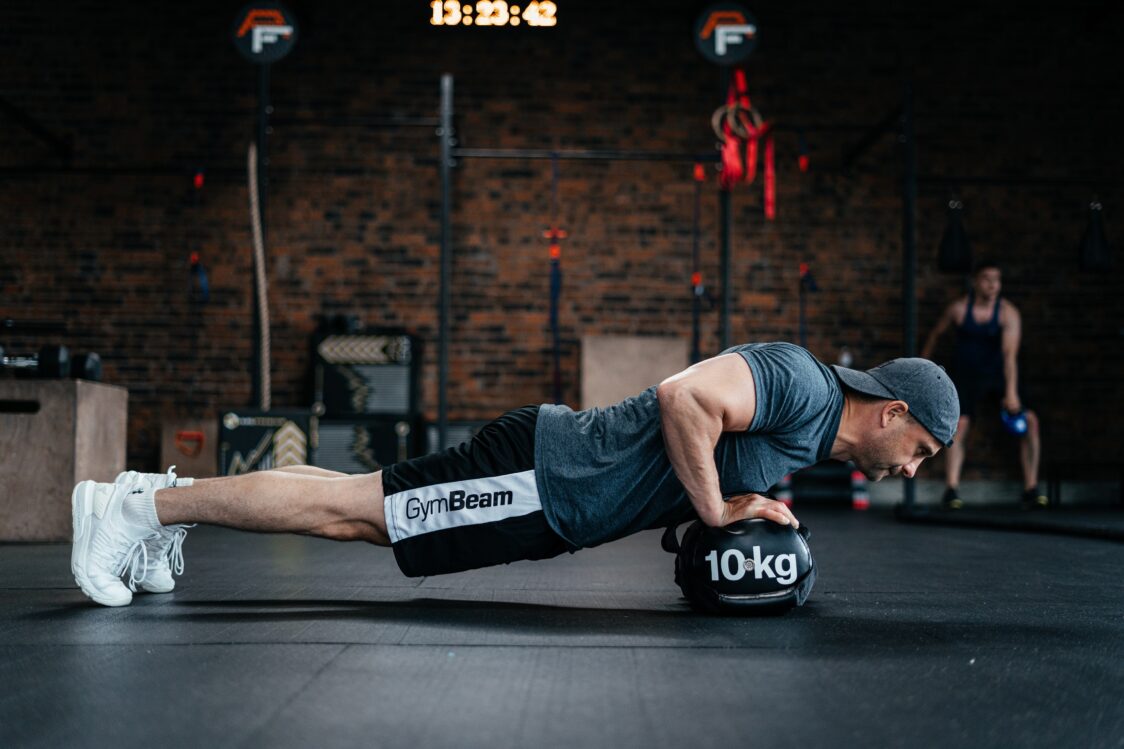
What Are the Benefits of Exercising With a Power Bag?
As you already know, you can utilize the power bag in your workouts as an unconventional weight. This will spice up your workout and provide your muscles with a new stimulus for growth and strengthening. It’s suitable for working out the entire body as well as individual muscle groups like biceps, triceps, abs, glutes, or thighs. Additionally, it helps you work on your core and stability.[3]
Moreover, you can use the power bag at the gym, at home, and even take it to a street workout park. It doesn’t take up much space, and you can easily store it, for example, under the bed. Moreover, both beginners and advanced athletes can incorporate it into their workout routines. However, to reap the benefits, it’s important to always focus on using the correct technique when exercising with the power bag.
How to Exercise With a Power Bag?
The power bag is a versatile fitness tool that you can use for full-body workouts. You can incorporate the exercises listed below into a single full-body workout session. However, you can also choose only those that are suitable for specific workouts targeting the abdomen, glutes or legs, for example.
The power bag is suitable for traditional strength training, during which you perform 8–20 repetitions of each exercise in 3–4 sets. Take a 1–2 minute break between each set. Start with fewer repetitions and sets and gradually increase them as you build strength. Similarly, you can use a heavier power bag for your next workout.
You can also create a HIIT or circuit training from the listed exercises. To achieve results, it’s important to exercise with the power bag regularly, ideally 2–3 times a week. Also, don’t forget about rest, as it is crucial for recovery, and support your results with a quality diet.

Example of HIIT using a power bag:
- choose 4-6 exercises
- perform one exercise for 30 seconds, then take a 30-second rest.
- follow up with the next exercise, and after completing all of them, you’ve finished one set
- take a 1-2 minute break between each set
- perform 3-4 sets in a similar fashion
Example of a circuit training using a power bag:
- choose 4-6 exercises
- gradually perform 8–20 repetitions of each exercise
- for isometric exercises such as the plank, try to hold the position for at least 15 seconds
- perform 3-4 sets in a similar fashion
- take a 1-2 minute break between each set
If you primarily exercise at home and want to achieve the best results, you can’t do without a training plan. This article “How to Create a Proper Training Program for Home Workouts?” will help you with that.
You might be interested in these products:
15 Effective Full-Body Exercises With the Power Bag
For a proper workout, you’ll need comfortable sportswear, sturdy footwear, an exercise mat, a bench (or a box or a couch), and of course, a power bag. Before you start exercising, don’t forget to warm up (by jogging in place or skipping rope) and loosen up your entire body. If you have multiple power bags to choose from, it’s better to start with a lighter one. If it feels too easy, you can switch to a heavier one for the next set.
Here are some exercises focusing on the shoulders, back, arms, abs, and lower body. You can use them to create a full-body workout or choose specific exercises for particular muscle groups.
1. Power Bag Shoulder Press
- Starting Position: Stand with your feet shoulder-width apart and grab the power bag by the side handles. Straighten up and slightly bend your knees. Lift the power bag up to just below your chin, close to the upper part of your chest. Keep your wrists straight, pull your shoulders away from your ears, and squeeze your shoulder blades together.
- Execution: Exhale as you lift the power bag in a controlled manner. Then, inhale as you smoothly return the power bag to the starting position and proceed with another repetition.
- Common Mistakes: Raised shoulders, bent wrists, uncontrolled (jerky) movement, inappropriate weight selection, arching the back.

2. Power Bag Front Raise
- Starting Position: Stand with your feet shoulder-width apart. Place the power bag upright and grasp it with both hands from the sides in the middle section. Straighten your back and slightly bend your knees. Bend your arms at the elbows and hold the power bag close in front of your body. Pull your shoulders way from your ears and squeeze your shoulder blades together.
- Execution: Exhale and perform the movement in a controlled manner, extending your arms forward. Keep your elbows slightly bent. You can hold this position for 1–2 seconds. Then, inhale, return to the starting position and follow up with the next repetition.
- Common Mistakes: Raised shoulders, uncontrolled (jerky) movement, limited range of motion, inappropriate weight selection, arching the back.
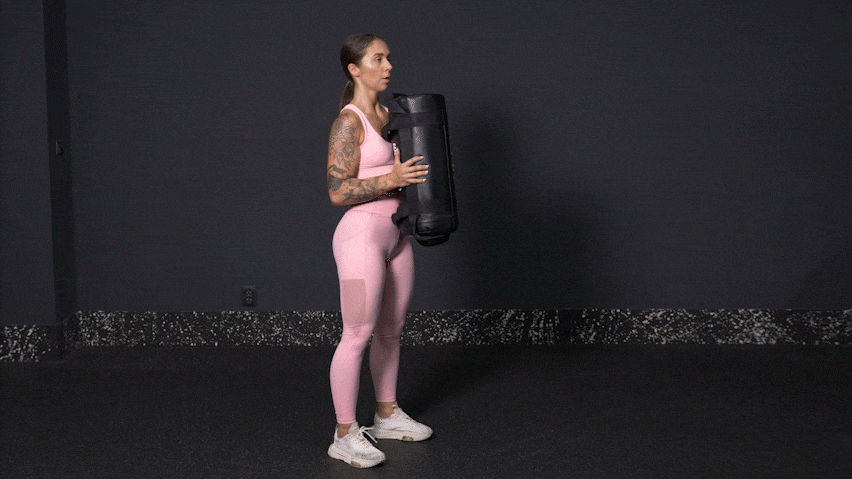
3. Power Bag Biceps Curl
- Starting Position: Stand with your feet shoulder-width apart and grip the power bag with both hands by the main handles. Straighten up, slightly bend your knees, and hold the power bag with extended arms at your sides.
- Execution: Exhale, contract your biceps to bend your elbows and lift the power bag towards your shoulders. In the upper position, you can include a 1-2 second hold. Then, inhalation, return it back to the starting position in a controlled manner and proceed with the next repetition.
- Common Mistakes: Engaging the lower limbs, elbows pointing away from the body, bent wrists, arching the back, uncontrolled movement, insufficient range of motion, inappropriate weight selection.
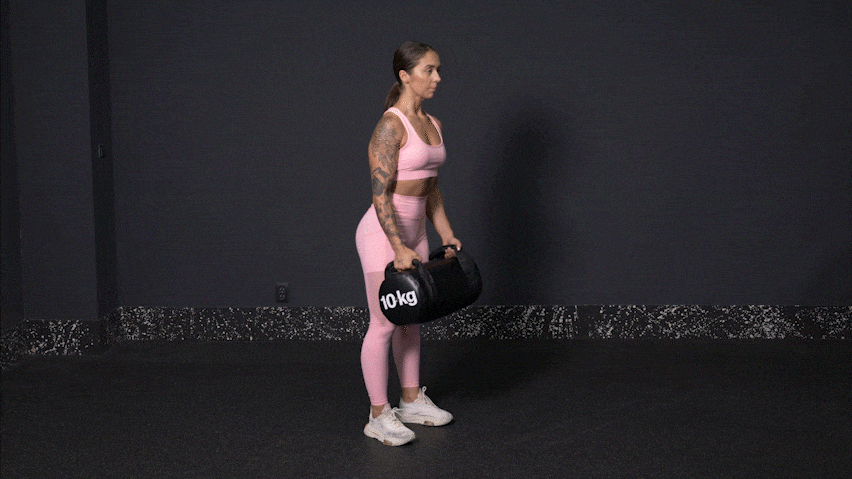
4. Power Bag Triceps Extensions
- Starting Position: Stand with your feet shoulder-width apart and grab the power bag with both hands by the main handles. Straighten up, slightly bend your knees, and hold the power bag above your head.
- Execution: Inhale as you bend your arms at the elbows and lower the power bag in a controlled manner towards the upper back. Then, exhale as you straighten your arms using the contraction of your triceps and proceed with another repetition. Keep your forearms in the same position throughout the whole exercise.
- Common Mistakes: Uncontrolled movement, insufficient range of motion, inappropriate weight selection, arching the back.
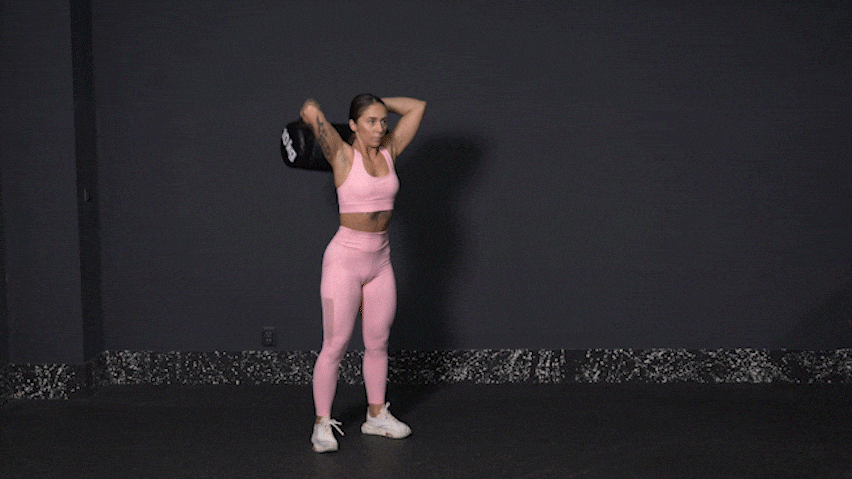
5. Power Bag Chest Press
- Starting Position: Lie on your back on the mat. Keep your shoulder blades together and grasp the power bag with both hands using the main handles. Bend your elbows and place it above your chest. Bend your knees, bring your heels close to your buttocks, and let them rest on the mat.
- Execution: Exhale as you straighten your elbows, extend your arms, and lift the power bag (approximately to the level above your neck). Inhale as you return it to the starting position in a controlled manner and proceed with the next repetition.
- Common Mistakes: Uncontrolled movement, elbows pointing away from the body, excessive arching of the back, limited range of motion.
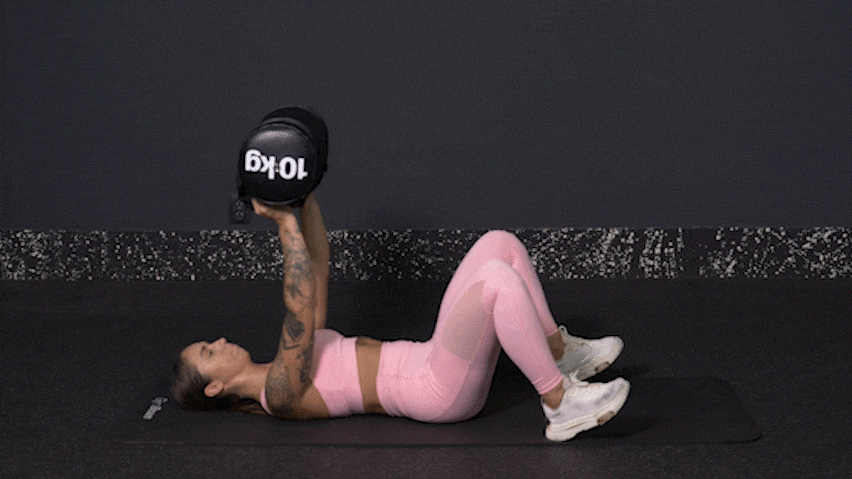
6. Power Bag Bent Over Row
- Starting Position: Stand with your feet shoulder-width apart and knees slightly bent. Lean forward slightly and keep your back in its natural curvature and your shoulder blades squeezed. Shoulders should be pulled away from the ears, and head in line with your spine. Grab the power bag with both hands using the main handles and lift it a few centimetres off the ground.
- Execution: Exhale and use the contraction of your back muscles to pull the power bag towards your sides. Then, return it to the starting position in a controlled manner and proceed with the next repetition.
- Common Mistakes: Rounded back, straightening the knees, leaning inappropriately, insufficient range of motion, uncontrolled movement.
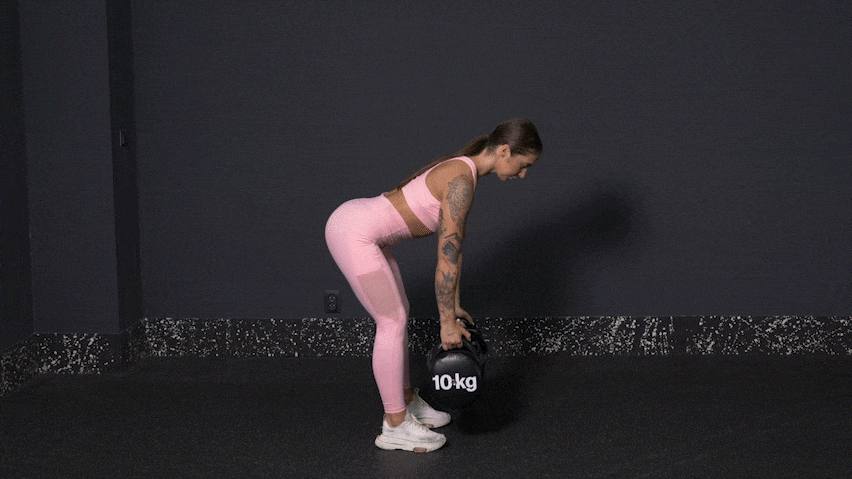
7. Power Bag Side Bends
- Starting Position: Stand with your feet shoulder-width apart, place the power bag upright, and grip it with one hand on the top handle. Bend your other arm and place your palm on your head or keep it by your side.
- Execution: Inhale and perform a side bend towards the side where you are holding the power bag. Try to bring your palm above your knee. Then, exhale and return to the starting position, and repeat for the desired number of repetitions. After completing the entire set, switch sides.
- Common Mistakes: Leaning forward or backward, insufficient range of motion, uncontrolled movement.
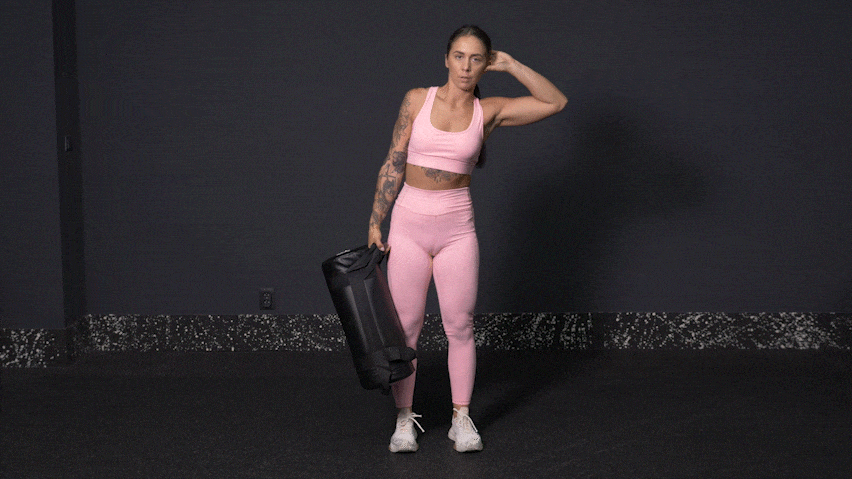
Discover our bestsellers:
8. Power Bag Rotation
- Starting Position: Stand with your feet approximately shoulder-width apart. Grip the power bag with both hands using the main handles. Straighten up, hold the power bag with extended arms in front of your thighs, and engage your core.
- Execution: Exhale as you bend your elbows and perform a rotation with the power bag behind your head to one side. Then return to the starting position, inhale, and rotate to the other side.
- Common Mistakes: Uncontrolled movement, insufficient activation of the core, excessive arching of the back.

9. Power Bag Plank Drag
- Starting Position: Kneel on the ground and transition into a plank position with extended arms. Position your legs wider than shoulder-width apart. Place the power bag beside you, aligned with your palms. Engage your core.
- Execution: Exhale and lift the hand opposite to the power bag. Grab the bag by its side handle and pull it to the other side. Then lift the hand and again pull the power bag to the other side. Continue like this until you complete the entire set.
- Common Mistakes: Arching the back, hips dropping towards the ground, excessively lifting the pelvis upwards, uncontrolled movement.
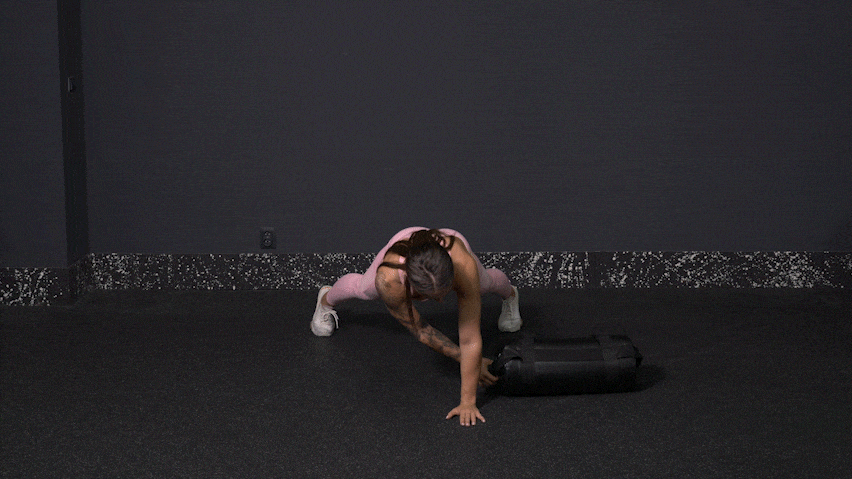
10. Power Bag Back Squat
- Starting Position: Stand with your feet shoulder-width apart, grasp the power bag with both hands, and place it on your shoulders.
- Execution: Inhale and initiate the movement by pushing your hips back and bending your knees to perform a squat. Choose the depth of the squat that allows you to maintain a natural curvature of the spine and enables you to rise from this position. Ensure that the alignment of your knees, ankles, and toes remains in one plane. Exhale as you smoothly extend your hips and the front of your thighs. Then, repeat the movement for the next repetition.
- Common Mistakes: Arching the back, limited range of motion, leaning forward, collapsing knees inward, uneven weight distribution, shifting onto the toes or heels, excessive or insufficient weight of the power bag.
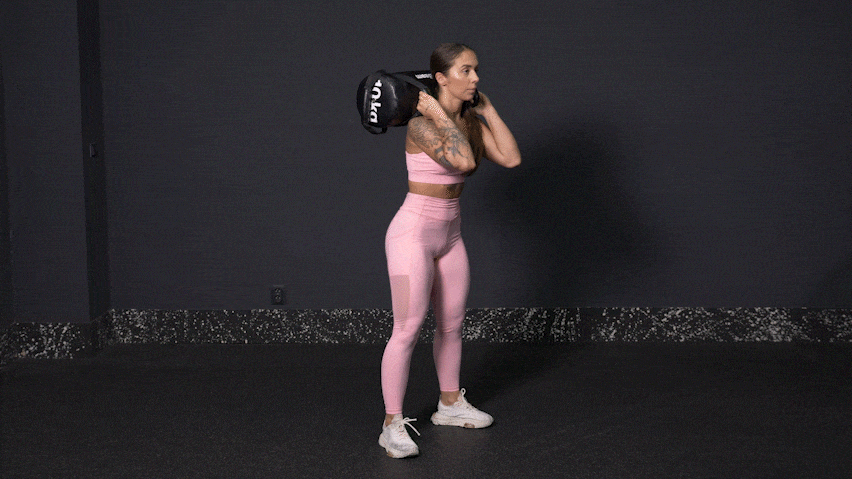
11. Power Bag Lunge and Twist)
- Starting Position: Stand with your feet shoulder-width apart. Grab the power bag with both hands and hold it in front of your body. Engage your core.
- Execution: Inhale as you shift your weight onto one leg and lunge forward with the other. The back leg may lightly touch the mat. Then, exhale as you twist your torso and perform a rotation with the power bag towards the side of the lunging leg. Inhale as you rotate back, and then exhale as you return to the starting position. Immediately follow up with another repetition on the same leg, and after completing the entire set, switch sides.
- Common Mistakes: Limited range of motion, poor movement coordination, arching the back.

12. Power Bag Back Lunge
- Starting Position: Stand with your feet shoulder-width apart, holding the power bag in your arms in front of your chest. Engage your core.
- Execution: Inhale as you do a backward lunge with one leg. Keep the weight on the front leg. Lightly touch the mat with the knee of the back leg. Exhale as you return to the starting position. Then, follow up immediately with the next repetition. Alternate legs, or complete a full set on one side before switching to the other.
- Common Mistakes: Limited range of motion, poor movement coordination, arching the back.
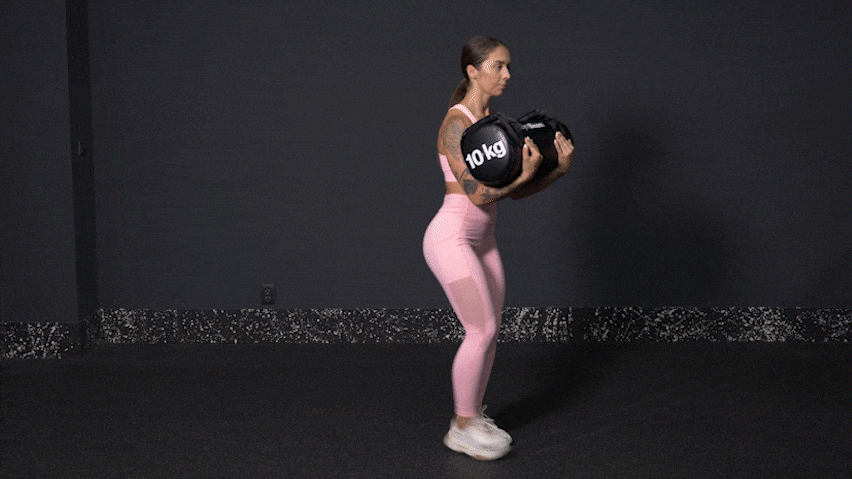
13. Power Bag Single Leg Deadlift
- Starting Position: Stand with your feet close together, grasp the power bag with extended arms, and hold it in front of your thighs. Engage your core.
- Execution: Shift your weight onto the standing leg, which is slightly bent at the knee. Inhale as you lean forward and simultaneously extend the other leg behind you, keeping it straight. The power bag may lightly touch the ground in the bottom position. Exhale as you return to the starting position by engaging the hamstrings and glutes. Perform a set on one leg first, then switch sides.
- Common Mistakes: Limited range of motion, poor movement coordination, uncontrolled motion, arching the back.
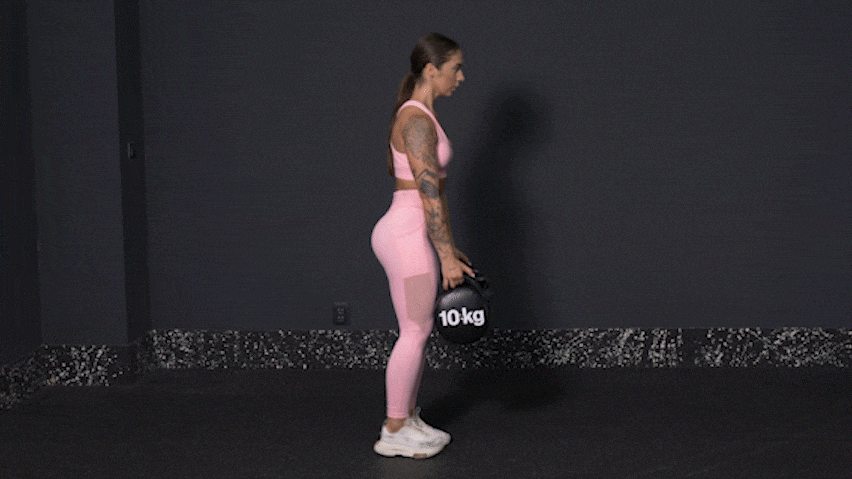
14. Power Bag Sumo Deadlift
- Starting Position: Place the power bag lengthwise in front of you and stand with your feet more than shoulder-width apart. Your toes and knees should point outward. Bend your knees and lean forward towards the power bag while keeping your back in a natural curve and your head in line with your spine. Then, grab the power bag with both hands by its handles.
- Execution: Inhale and then exhale as you gradually straighten up by activating the muscles of your thighs and glutes. Begin by straightening your knees and then your torso in a controlled manner. The power bag should pass near the front of your legs on the way up. Then, continue with the next repetition.
- Common Mistakes: Arching the back, uncontrolled movement, limited range of motion.
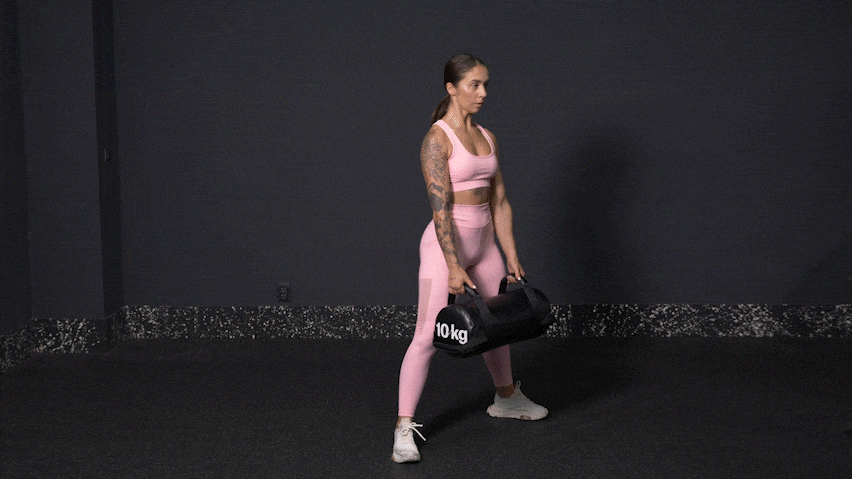
15. Power Bag Bulgarian Split Squat
- Starting Position: Stand in front of a workout bench, box, or couch with your feet shoulder-width apart. Place the power bag behind your head on your shoulders and grip it with both hands by the handles. Take a large step forward, placing the toes of one foot on the bench, and engage your core.
- Execution: Inhale and bend the knee of your front leg, performing a forward lunge. Pay attention to ensure that the knee of your front leg points outward, just like your foot. In the bottom position, you can lightly touch the mat with the knee of your back leg. Then, exhale and straighten up, immediately following up with the next repetition. After completing the set, switch legs and perform the same exercise on the other side.
- Common Mistakes: Limited range of motion, knee collapsing inward, poor movement coordination, leaning forward excessively.
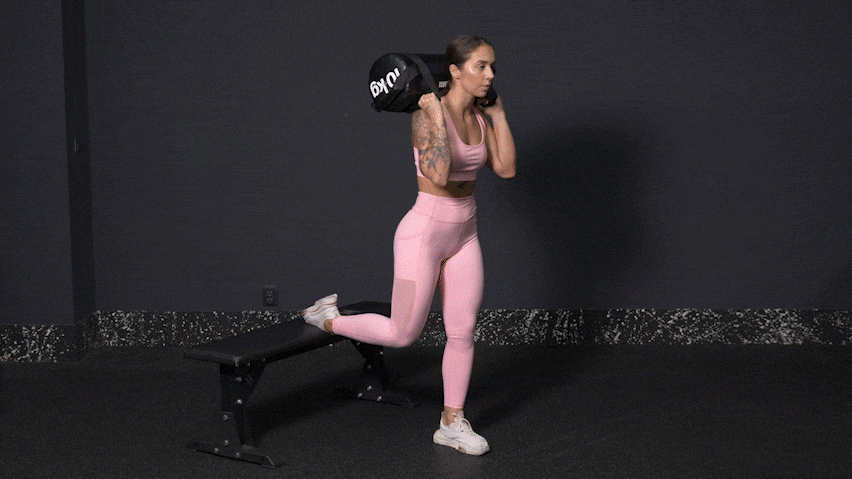
Where to Go From Here?
- You can also get a full-body workout using a balance half-ball. Effective exercises can be found in the article: 10 Best Balance Half-Ball Exercises to Improve Balance, Strengthen Your Back and Entire Body
- You can also spice up your main muscle group workout with exercises from the article: Top 13 Exercise Ball Exercises for a Full-Body Workout
- Don’t have any fitness equipment on hand? No problem. You can still get a quality workout using just your body weight, following the exercises outlined in the article: Get in Shape With These 12 Bodyweight Exercises
- If you want to focus on strengthening your abdominal muscles, you can work out with a medicine ball using the exercises from the article: Top 10 Ab Exercises With a Medicine Ball
- Plank exercises can be a very effective solution to strengthen and sculpt your abs. You can find the best variations of this exercise in the article: 24 Most Effective Plank Variations
- And if you just want to stretch, try out exercises with a foam roller according to the article: How to Use a Foam Roller? Top 8 Foam Roller Exercises
- Are you planning to set up a home gym? In that case, you shouldn’t miss the article: Must-Have Accessories for Your Home Gym
What Are the Main Takeaways?
Exercising with a power bag can be a fantastic way to spice up your workout routine, prevent stagnation, and achieve better results. It allows for a comprehensive full-body workout and can be utilized for targeting specific muscle groups as well. However, the benefits of using a power bag are not exclusive to advanced athletes. Thanks to its various sizes, beginners can also incorporate it into their training. Moreover, it serves as a perfectly versatile fitness tool that is sure to find its place in any home gym. Remember, though, that consistent training, at least twice a week, is key to achieving the best results. Lastly, don’t forget to prioritize adequate rest and maintain a nutritious diet.
Was this article helpful to you? If yes, share it with your friends and inspire them to try their hand at a power bag workout.
[1] ISSA. 3 Lesser-Known Benefits of Sandbag Training. – https://www.issaonline.com/blog/post/3-lesser-known-benefits-of-sandbag-training
[2] Barker, M. Why Every Athlete Can Benefit From Sandbag Training. – https://barbend.com/sandbag-training/
[3] PowerliftingTechnique.com. 7 Sandbag Training Benefits (Plus, 1 Drawback) – https://powerliftingtechnique.com/sandbag-training-benefits/


Add a comment